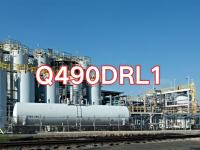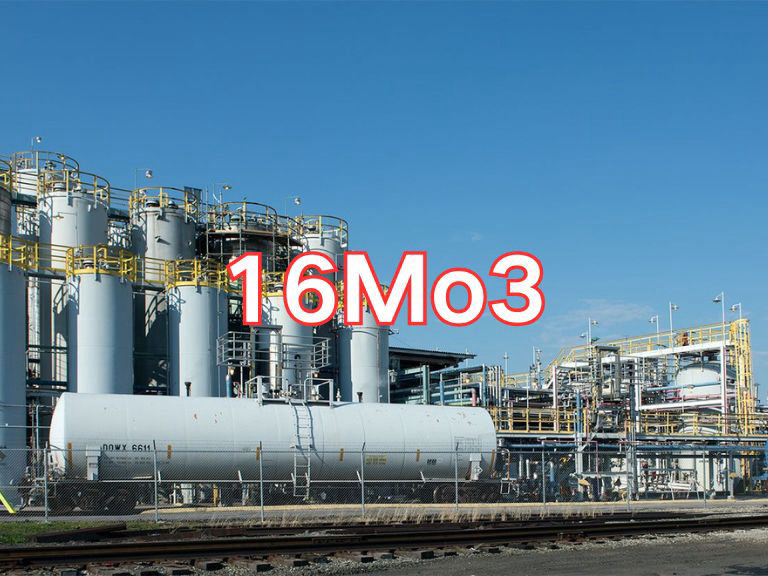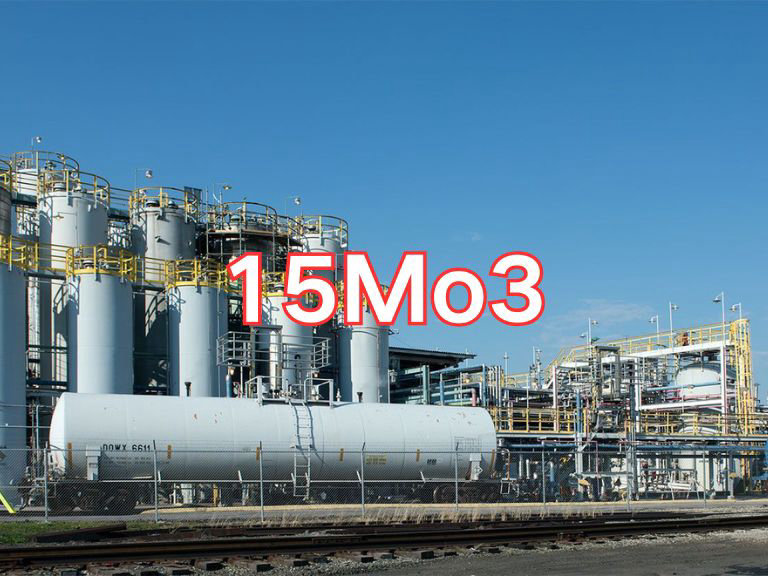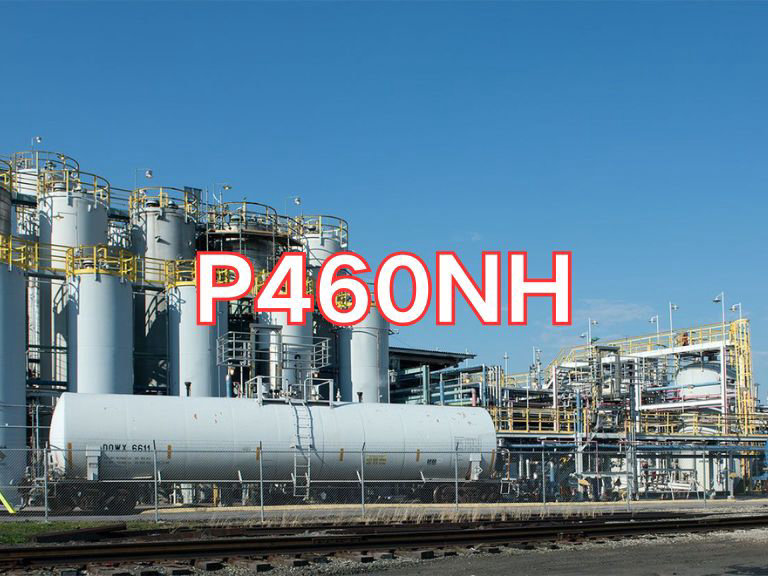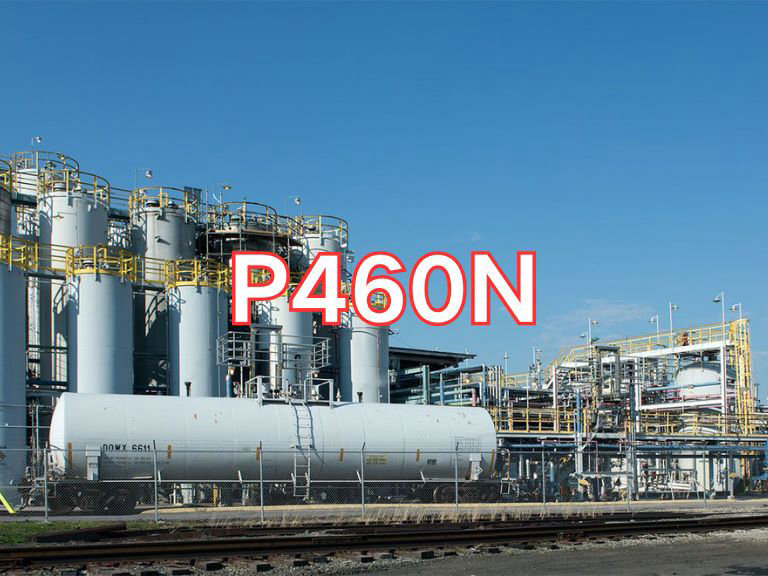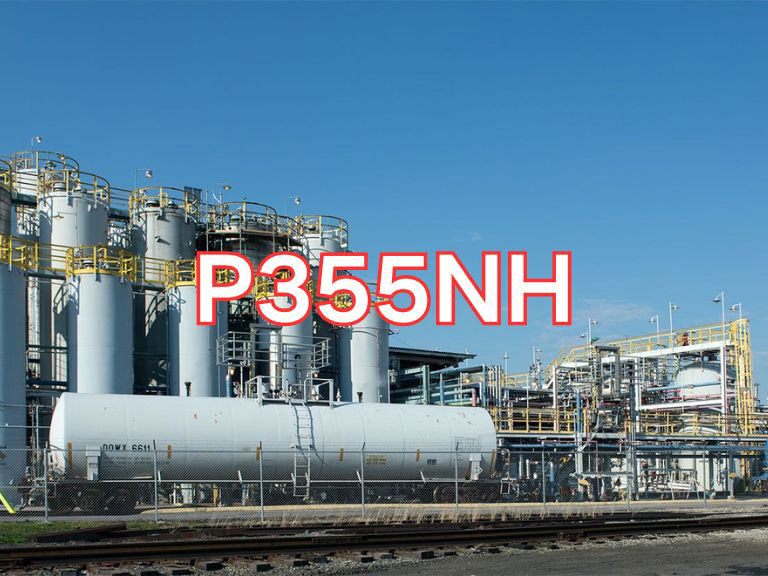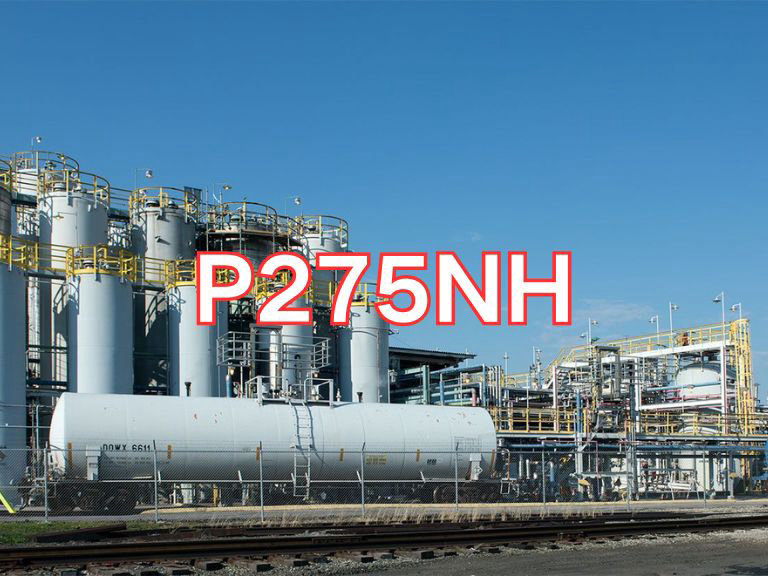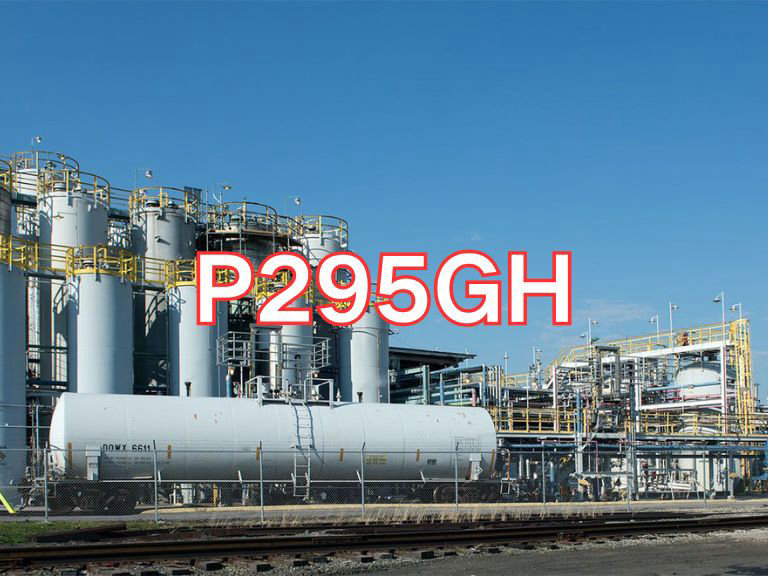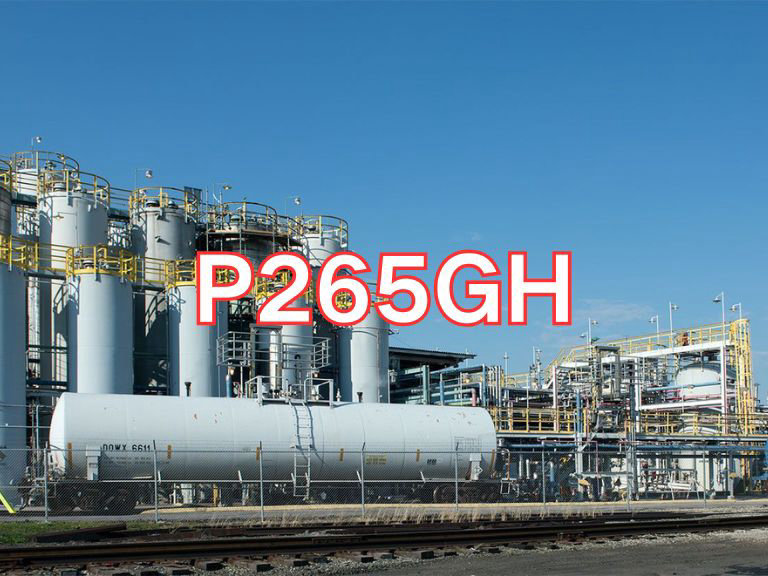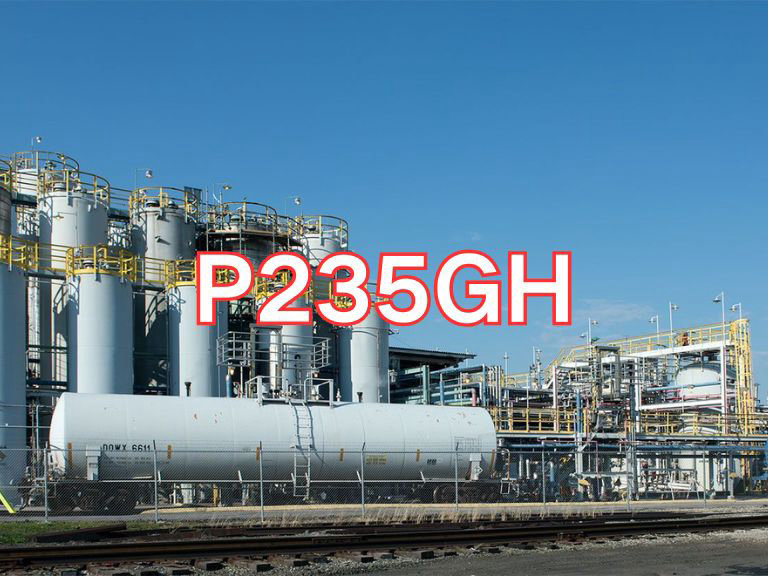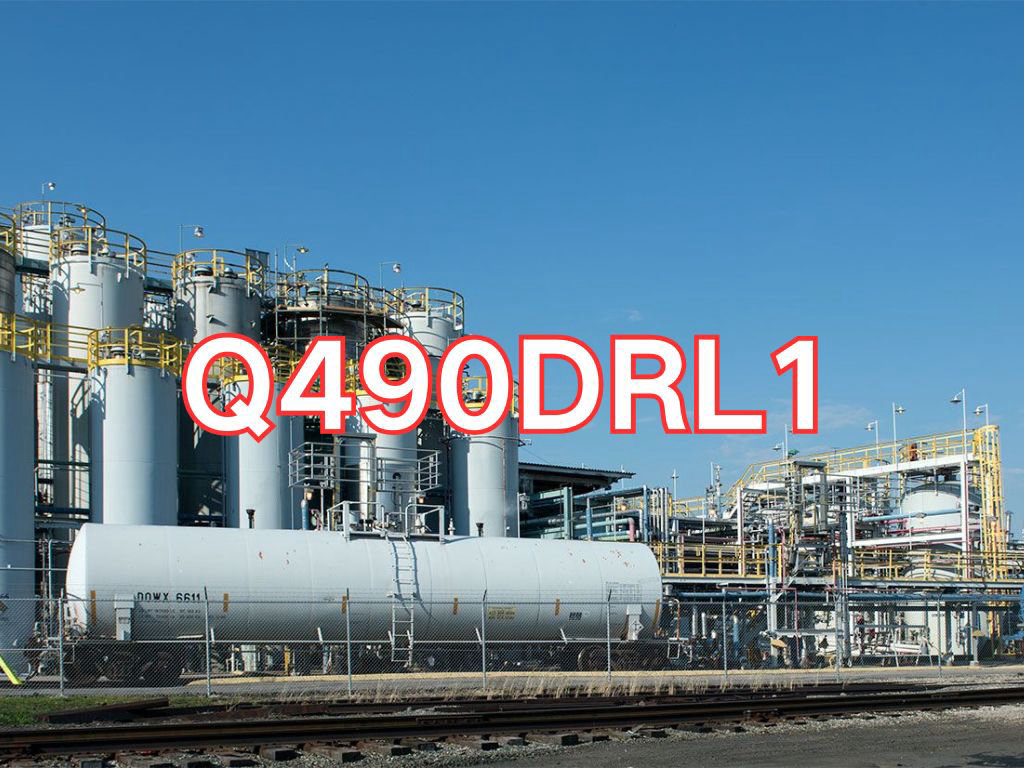

Q490DRL1
Q490DRL1: A low-temperature quenched and tempered steel with impact toughness ≥80 J at -40°C. Suitable for pressure vessels in cold environments, it provides good low-temperature crack resistance for applications like LNG tanks.
Q490R is a high-strength low-alloy hot-rolled steel plate, with a designation that carries specific technical meanings. "Q" stands for "Yield Strength" (from the Chinese pinyin "Qu" for "Qu fu qiang du"); "490" indicates the specified minimum upper yield strength of 490 MPa; and "R" is the abbreviation for "Rongqi" (Vessel), signifying its dedicated use in the fabrication of welded pressure vessels. Therefore, Q490R refers to a pressure vessel steel with a yield strength of no less than 490 MPa.
This steel plate is primarily used in manufacturing welded pressure vessels operating under moderate temperature and pressure conditions, widely applied in industries such as petrochemicals, fertilizer production, light industry, and mechanical manufacturing. Typical applications include shells, heads, and other pressure-bearing components of reactors, heat exchangers, separators, and storage tanks. With significantly higher strength than commonly used Q345R, Q490R allows for reduced equipment weight, lower material consumption, and decreased manufacturing and transportation costs while maintaining safety, making it suitable for large-scale or thick-walled vessels with high load-bearing requirements.
The main features of Q490R lie in its combination of high strength and excellent overall performance. While achieving a yield strength level of 490 MPa, the steel maintains good ductility, toughness, and weldability. Its carbon equivalent is well controlled, resulting in low sensitivity to cold cracking. It can be welded using conventional procedures, typically requiring no preheating or only low preheating temperatures, which facilitates on-site construction. Additionally, Q490R exhibits good cold and hot working properties and resistance to lamellar tearing (Z-direction properties can be guaranteed upon request), meeting the demands of complex structural forming and high-reliability welded joints. Through optimized alloy design (e.g., adding microalloying elements such as Nb, V, and Ti) and thermomechanical controlled processing (TMCP), grain refinement and precipitation strengthening are achieved, resulting in a favorable balance of high strength and good toughness.
The current national standard for Q490R is GB/T 713-2023 "Steel Plates and Strips for Pressure Equipment". Published in 2023, this standard replaces the previous GB/T 713-2014 "Steel Plates for Boilers and Pressure Vessels", broadening the scope with the updated title "for Pressure Equipment". In GB/T 713-2023, Q490R is officially included, with clear specifications for its chemical composition, mechanical properties, impact testing (at room temperature or specified temperatures), ultrasonic testing, and dimensional tolerances. This provides standardized material support for the design and manufacture of high-strength pressure vessels, promoting lightweight and efficient development in the industry.
Comparison of Q490R, Q490DRL1, Q490DRL2 and Q490RW
The key differences among these four grades lie in their application focus, low-temperature toughness requirements, and special provisions for weldability.
Common Features
Standard: All comply with GB/T 713.6-2023.
Strength Level: Minimum yield strength ≥ 490 MPa, tensile strength 610–730 MPa.
Delivery Condition: All are supplied in quenched and tempered (QT) condition, with tempering temperature no less than 600°C.
Thickness Range: 10–60 mm.
Basic Mechanical Properties: Elongation after fracture (A) ≥ 17%, 180° bending test passed.
Main Differences
Q490R
General-purpose QT high-strength steel. No special low-temperature or welding requirements. Charpy impact test is conducted at -20°C, with KV₂ ≥ 80 J. Suitable for high-pressure vessels and thick-walled piping operating at temperatures no lower than -20°C. This is the base grade.
Q490DRL1
Low-temperature vessel steel, Grade L1. "DR" stands for "Low-Temperature Vessel", and "L1" indicates Level 1 low-temperature requirement. Impact test is performed at -40°C, with KV₂ ≥ 80 J. Used in cold regions or for equipment operating at -40°C.
Q490DRL2
Low-temperature vessel steel, Grade L2. Compared to DRL1, it has higher low-temperature toughness requirements. The impact test is conducted at -50°C, with KV₂ ≥ 80 J. Suitable for more severe arctic environments, such as support structures for LNG tanks or shell bodies of cryogenic heat exchangers in high-latitude areas. It has stricter control on P and S content (S ≤ 0.005%) to ensure purity and toughness at deep cryogenic temperatures.
Q490RW
Steel for high-heat-input welding. "W" stands for "Welding", specifically designed for high-heat-input welding processes (e.g., submerged arc welding). In addition to KV₂ ≥ 80 J at -20°C, it additionally requires a lateral expansion (LE) value ≥ 0.64 mm. This index evaluates the toughness of the heat-affected zone (HAZ) under high heat input, preventing brittle fracture caused by grain coarsening from welding thermal cycles. Ideal for large, thick-walled vessels, significantly improving welding efficiency.
Summary Comparison
| Grade | Key Feature | Impact Test Temperature | Special Requirement |
|---|---|---|---|
| >Q490R | General-purpose QT steel | -20°C | None |
| Q490DRL1 | Low-temperature vessel steel | -40°C | Low-temperature toughness |
| Q490DRL2 | Higher-grade low-temperature steel | -50°C | Stricter impurity control, higher toughness |
| Q490RW | High-heat-input welding steel | -20°C | Lateral Expansion ≥ 0.64 mm |
Conclusion: All four grades are quenched and tempered high-strength steels, but are differentiated for specific applications. Q490R is general-purpose; Q490DRL1/L2 are classified into two levels based on operating temperature; Q490RW focuses on meeting the requirements of efficient, high-heat-input welding. Material selection should be based on the equipment's operating temperature, welding process, and safety requirements.

Ultrasonic Testing (UT)
A key non-destructive testing technique that uses high-frequency sound waves to detect internal flaws in steel plates. The probe emits sound waves, which reflect when encountering defects such as cracks or inclusions. The receiver captures the echoes, enabling precise determination of defect location and size. With high sensitivity, strong penetration, and fast inspection speed, UT effectively ensures internal quality, widely used in the production of heavy plates, pressure vessel plates, and other high-end products to guarantee safety and reliability.

Magnetic Particle Testing (MT)
A common surface inspection method that magnetizes the workpiece, causing leakage magnetic fields at surface or near-surface defects like cracks or inclusions, which attract magnetic particles to form visible indications. Simple to operate and highly sensitive, MT is suitable for rapid inspection of surface and near-surface flaws in ferromagnetic materials, widely used for online or offline inspection of plate edges, ends, and welds, ensuring product quality and safety.

Penetrant Testing (PT)
A non-destructive method for detecting surface-breaking flaws. A penetrant liquid is applied to the cleaned steel surface, allowing it to seep into defects such as cracks or pores. After removing excess penetrant, a developer is applied, causing the trapped penetrant to bleed out and form visible indications. Simple and cost-effective, PT is suitable for inspecting surface defects in various non-porous materials, commonly used for welds, castings, and complex components, effectively ensuring surface quality of steel plates.

